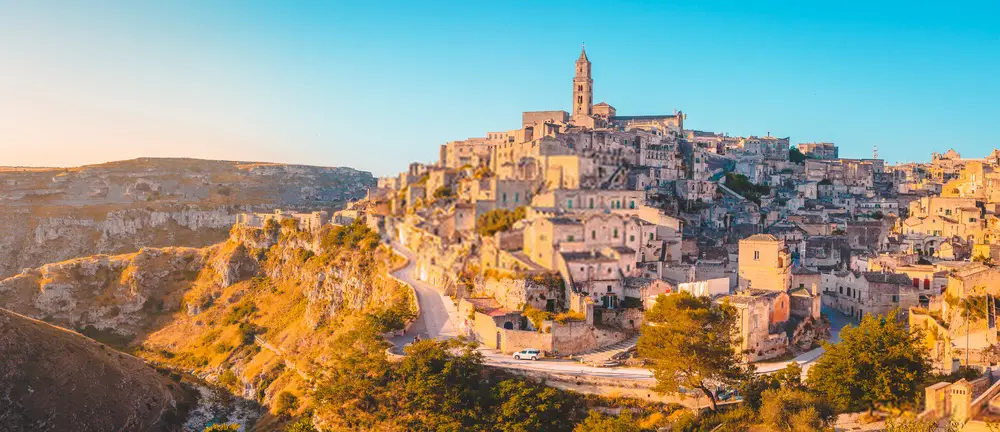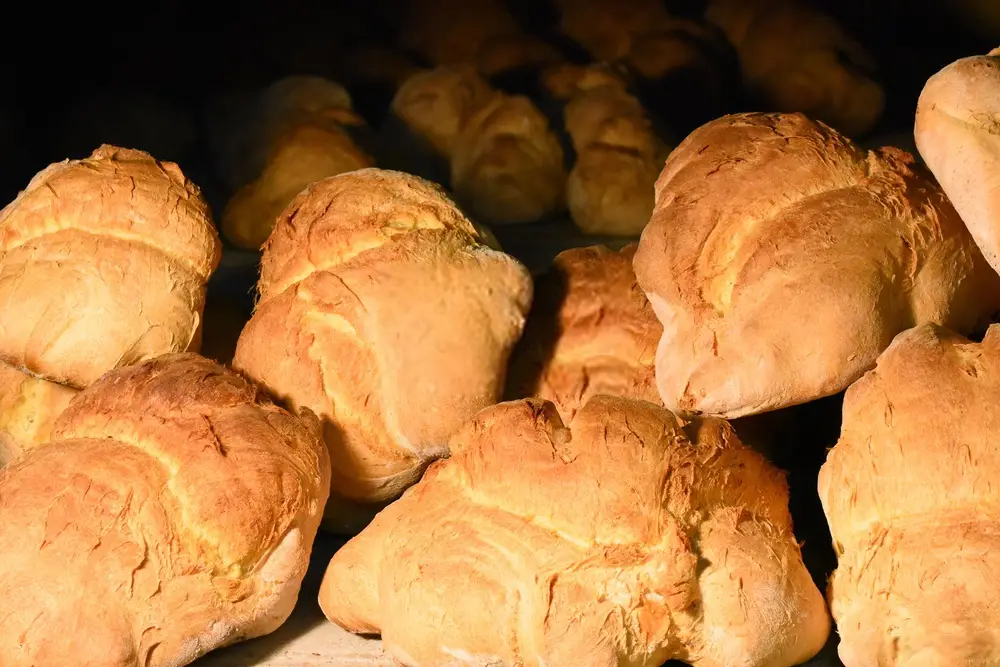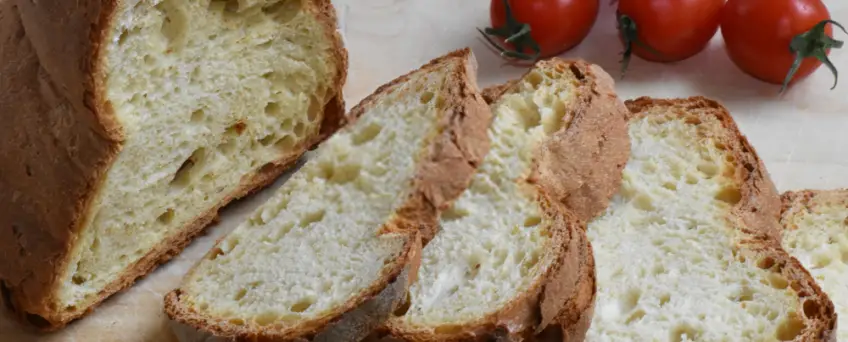Matera’s Bread (Pane di Matera), One of the Best Breads in the World
Matera’s bread is the bread obtained by an ancient processing system, typically used by bakers in the city and province of Matera, in the Basilicata region. This system provides for the exclusive use of durum wheat semolina.

The bread obtained, thanks to the ingredients used and the specificity of the manufacturing process, is characterized by a yellow color, a typical and very different porosity (with pores inside the bread, with a diameter ranging from 2–3 mm up to 60 mm), an extremely characteristic taste and smell. The shelf life of the bread thus obtained can reach 7 days for 1 kg pieces and 9 days for 2 kg pieces.
Due to its processing system, the centennial tradition of Lucanian farmers and bakers that dates back to the Kingdom of Naples, and the shape that reminds the landscape of the Murgia Materana, Matera’s Bread became the symbol of the City of the Sassi and in February 2018 has obtained the IGP mark.
Its production was an important ritual, marked by fundamental steps – from the recovery of the mother yeast to the formation of the dough – which were homemade. These phases were part of the female duties and, the more the bread was soft and fragrant, the more the woman who made it was admired.
At this point, however, the male part of society came into play: the baker had to shape the loaf, bake it and imprint the mark, while the head of the family was responsible for the delicate task of cutting slices on a regular basis. To do this, he hugged the loaf holding it against his chest and began to slice carrying the sharp knife towards him: therefore, one had to be very careful not to cut himself.
The assignment was so important and delicate that the boys were considered ready to marry only when they managed to cut a slice of bread perfectly.
The baking of the bread took place in public ovens, where women brought their own dough: until the end of the 1950s, before baking, with a hardwood stamp, a mark was recognized on the loaf for recognition. The stamp not only indicated family ownership, but also had a very strong symbolic value: it was believed that each stamp corresponded to a particular virtue, such as strength, defense, fruitfulness, and that, by marking the loaf, they were able to transfer these values to bread and, consequently, to those who ate it.
Furthermore, the baker had the task of carving three cuts with the knife on the upper part of the loaf, a gesture that recalls the religious formula “in the name of the Father, the Son and the Holy Spirit”.

Its origins are ancient and reflect the slowness of peasant life and of the Rione Sassi, and even today this bread is a true excellence of the territory, also appreciated outside it.
So, since 2019 is the year of Matera, recognized as the European Capital of Culture, let’s discover together the history, specifications, characteristics and processing of Matera’s bread.
Matera’s Bread must have the following characteristics:
- Croissant shape or a high square;
- Size of 1 or 2 kg;
- Crust thickness of at least 3 mm;
- Straw yellow color crumb with characteristic honeycomb;
- Humidity not higher than 33%.
The choice of old wheat varieties, which retain, in their genetic heritage gives rise to flours that transfer the unique taste and flavor that distinguish it. The manufacturing process is added and, specifically, the creation of the mother yeast, which, the product with fresh fruit, adds further and particular sensations of taste.



Comments (5)
Tony Saladino
Is there a recipe available for the Matera bread?
Italian Chef
Not yet… we will share the recipe in the coming days!
Cathy DeRenzo
I would like your recipe for pane di matera
AnnMarie Maguire
My favorite bread. We had it all the time when I was young.
Chryssie Economides
J’aimerais tellement avoir la recette en français pour ce pain de légende 🙏